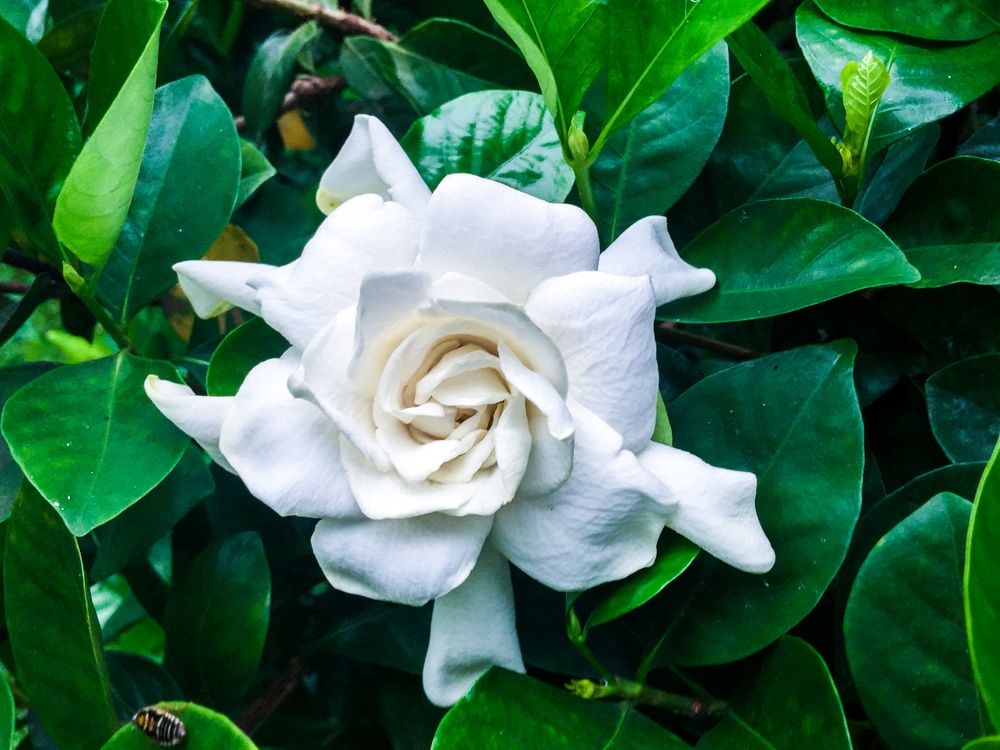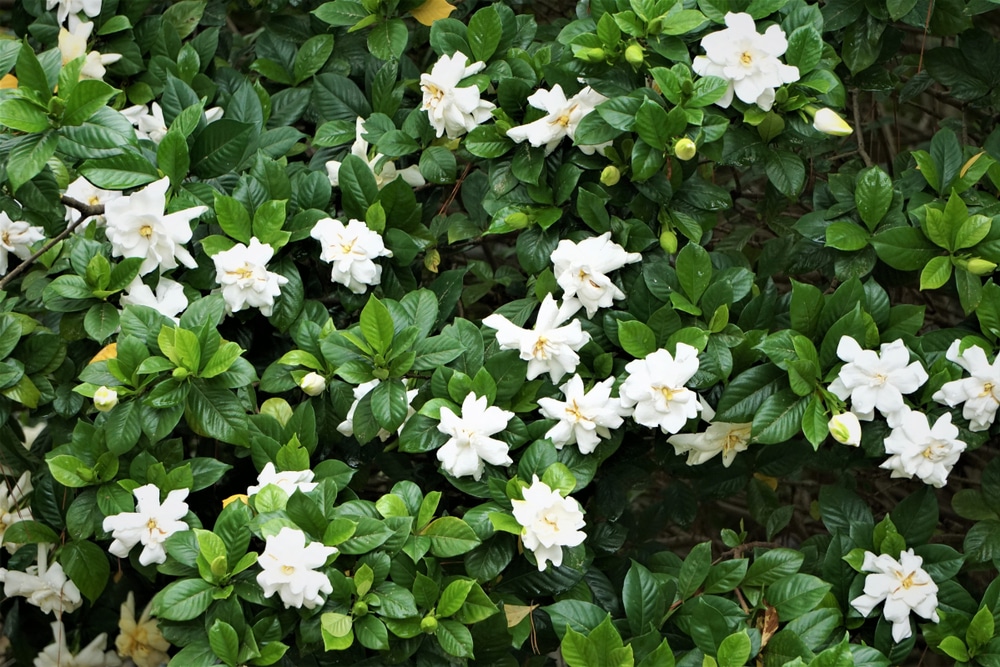Hardy Daisy Gardenia is an excellent choice if you’re looking for a plant that will add a touch of elegance to your garden. This striking plant is covered in beautiful white flowers when in season, and its glossy green foliage makes it a standout in any landscape.
Hardy Daisy Gardenia is a tough plant that can tolerate many conditions, making it ideal for even the novice gardener.
| Botanical Name | Gardenia Jasminoides’ Daisy |
| Common Name |
Hardy Daisy Gardenia |
| Plant Type | Perennial |
| Flower Color | White |
| Size When Mature | 48 inches |
| Bloom Time | Spring to Fall |
| Sun Requirements | Full to Partial Sun |
| USDA Hardiness Zones | 7-10 |
| Soil PH Range | 5.0-6.0 |
| Soil Type | Acidic, Well-draining |
| Water Needs | Low-Medium |
| Native Area | Asia |
What You Need to Know About Hardy Daisy Gardenia
The Hardy Daisy Gardenia is a beautiful flowering plant native to Asia. This plant is among the most beautiful and fragrant flowers you can grow in your garden.
The plant can grow up to 48 inches in height. It has a very dense growth habit, and its branches tend to grow horizontally. The plant is evergreen, meaning it will keep its leaves all year round.
The plant leaves are dark green and glossy, with a leathery texture. Each leaf is elliptical and has a serrated edge, arranged in opposite pairs along the stem. They are attached to the stem by short petioles.
The flowers from this plant are one of the most beautiful and fragrant flowers you can grow in your garden. They have large, white blossoms that fill the air with their sweet scent. The flowers bloom in clusters and appear during Spring through Fall, although there may be some blooms year-round in warmer climates.
How to Care for Hardy Daisy Gardenia
Here’s everything you need to know about growing and caring for a thriving Hardy Daisy Gardenia
Light
The plant prefers full sun but can also tolerate partial shade. Morning sun with afternoon shade is the ideal light exposure for this plant. It will also do well under filtered light, making them ideal for growing indoors.
If you are growing this plant indoors, place them near a bright window where it will receive plenty of indirect sunlight.
Water and Soil Needs
The plant should be watered deeply and regularly during its first growing season to help establish a deep, extensive root system. Once established, it is quite a drought-tolerant plant. Be sure to check the soil before watering to make sure it is dry several inches down. Then, water slowly and deeply until the soil is saturated and water begins to pool on the surface.
Gardenias prefer well-drained, acidic soil with a pH of 5.0 to 6.0. They are highly susceptible to root rot, so it is important to ensure their roots have plenty of air circulation. Your plant can have better drainage by adding sand or organic matter to your soil or planting in raised beds.
Temperature Requirements
When it comes to temperature requirements, the plant is very versatile. It can tolerate temperatures as low as 0°F, making them perfect for gardens in colder regions. This plant prefers cooler weather and is hardy in USDA zones 7-10. It will bloom more profusely when the temperature is between °0°F and 40°F.
Fertilizer
The best fertilizer to use on a Hardy Daisy Gardenia is a granular fertilizer with high Nitrogen and Phosphorus content. This is so that the plant has better blooms and greener leaves. Feed your plant every 2-3 months during the growing season and once a month during the winter for better growth.
Common Diseases
There is almost no plant that is not susceptible to diseases, and as such, the Hardy Daisy Gardenia suffers from some.
Common diseases of the plant include root rot, leaf spot, and twig blight.
Root rot is caused by a type of fungi that infects the roots of plants, causing them to rot and eventually die. Leaf spot is another fungal disease that causes brown or black spots on the plant’s leaves. Twig blight is a bacterial disease that causes the stems and branches of the plant to die.
You can control all of these diseases with proper care and treatment.
Hardy Daisy Gardenia Propagation
The Hardy Daisy Gardenia can be propagated by seed, cuttings, or division.
When propagating by seed, it would be best if you sowed the seeds in a peat moss-based potting mix. Moisten the mixture and place it in a plastic bag. You should place the bag in a warm location until the seeds germinate. Once the seeds have germinated, you should transplant them into individual pots.
When propagating by cuttings, you should take the cuttings from new growth. The cuttings should be dipped in rooting hormone and then planted in a well-drained potting mix. They should be kept moist and in a warm location until they have rooted. Once they have rooted, you can transplant them into individual pots.
The plant should be divided into two or three sections when propagating by division. Each section should have several leaves and roots attached. You should replant the sections in individual pots filled with a well-drained potting mix. They should be kept moist and in a warm location until they have rooted.


